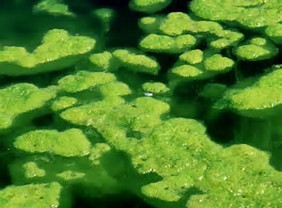
Treatment of Algae species in Fresh and Salt Using Proprietary Water Processing Technology
Introduction
Introducing a novel technology that can;
“One of the best known HABs in the nation occurs nearly every summer along Florida’s Gulf Coast. This bloom, like many HABs, is caused by microscopic algae that produce toxins that kill fish and make shellfish dangerous to eat. The toxins may also make the surrounding air difficult to breathe. As the name suggests, the bloom of algae often turns the water red.
Introduction
Introducing a novel technology that can;
- “transform” contaminated, polluted, and even environmentally toxic harmful algal blooms, or HABs into an easier to handle, bio-waste or compost.
- Reducing or eliminating:
- Heavy metals
- Trace organic compounds
- Total suspended solids (TSS)
- Turbidity
- Micro-biological’s including; Cyanobacteria, Coliform bacteria, E. coli, specific pathogenic species of bacteria (such as cholera-causing Vibrio cholerae), viruses, and protozoan parasites.
“One of the best known HABs in the nation occurs nearly every summer along Florida’s Gulf Coast. This bloom, like many HABs, is caused by microscopic algae that produce toxins that kill fish and make shellfish dangerous to eat. The toxins may also make the surrounding air difficult to breathe. As the name suggests, the bloom of algae often turns the water red.

HABs have been reported in every U.S. coastal state, and their occurrence may be on the rise. HABs are a national concern because they affect not only the health of people and marine ecosystems, but also the 'health' of local and regional economies.” … [some] algae, however, produce powerful toxins that can kill fish, shellfish, mammals, and birds, and may directly or indirectly cause illness in people. HABs also include blooms of non-toxic species that have harmful effects on marine ecosystems. For example, when masses of algae die and decompose, the decaying process can deplete oxygen in the water, causing the water to become so low in oxygen that animals either leave the area or die. (Source; National Oceanic and Atmospheric Administration, NOAA).
These potentially toxic HABs can be reduced or eliminated without dangerous side-effects.
Benefits:
These potentially toxic HABs can be reduced or eliminated without dangerous side-effects.
Benefits:
- No Chemical Additives
- No Bacterial Additives
- No Polyelectrolyte AdditivesReduces or eliminates phosphorus and nitrogen of the water supply – the major source of advanced algae growths.
- Active technology able to remove chemical and biologic agents in one step.
- Dramatically reduces or eliminates the load on Industrial or Municipal Wastewater Treatment Plants.
- Provide an economic alternative to industrial water users by enabling the recycling of water within their processes instead of releasing into the wastewater treatment systems.
- Provide an economic alternative agriculturally that is safe for irrigation purposes.
- Provide or create an alternative water supply to industry for various processes.
- Lower operating costs.
- Cost-effective equipment maintenance.
- Greatly reduced footprint requirement over conventional methods.
- Cost/value basis purchase or lease option – providing shorter ROI.

The reduction of these Bio-Hazardous and Chemically Hazardous materials from the base water dramatically reduces or eliminates the load on industrial or municipal wastewater treatment plants as well as improving the quality of life for millions of people worldwide. This same technology provides an economic alternative to industrial water users by enabling the recycling of water within their processes before release into the wastewater treatment systems. In many of these cases this water may now be agriculturally safe for irrigation purposes or usable in industry in concrete or the making of cement block for example – all while reducing unnecessary loading of municipal wastewater treatment facilities.
